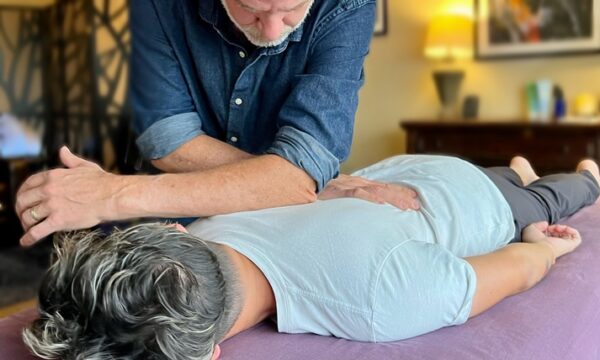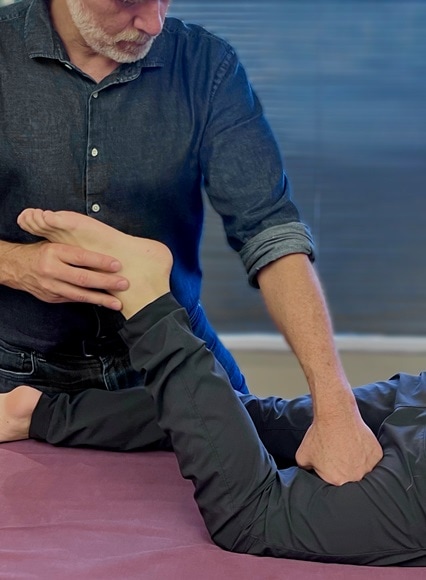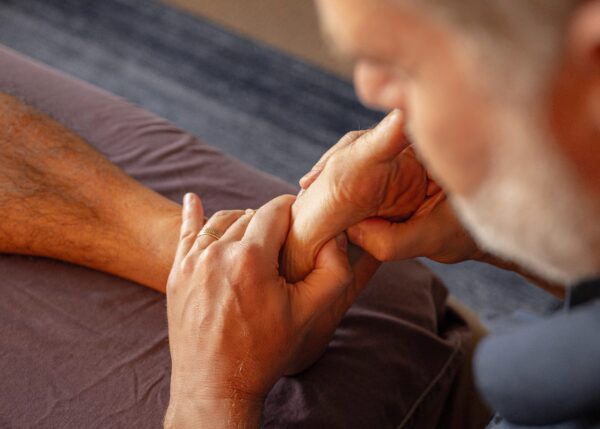Myofascial Release: Santa Rosa Advanced Manual Therapy Offers Non-Invasive Healing and Relief
Myofascial release work focuses on releasing tension and restrictions in the connective tissue, called fascia, that surrounds and supports muscles, bones and organs throughout the body.
This manual therapy technique is a gentle, non-invasive treatment modality that is effective and suitable for individuals of different age groups and physical conditions.

Randy applies sustained pressure stretching and lengthening the tissue in the areas of focus always ensuring that the work is customized to your specific needs and comfort level.
How Myofascial Release Therapy Helps Relieve Muscle Pain?
 Fascia is a thin, web-like layer of connective tissue that surrounds all of the muscles, bones, organs and nerves in the body.
Fascia is a thin, web-like layer of connective tissue that surrounds all of the muscles, bones, organs and nerves in the body.
Fascia is often referred to as the “body’s web” because it is a continuous sheet of tissue that extends throughout the body.
It is not a single layer of tissue, but rather a complex network of interconnected layers. Fascia can be thought of as a three-dimensional matrix that surrounds and supports the body’s structures.
It has several but two of its roles are to support and protect the body’s structures, such as muscles, bones and organs, and transmit force across structures created by muscle contraction. Fascia can become tight and restricted due to injury, overuse, or stress. This can lead to pain, stiffness and decreased range of motion.
Myofascial release stretches and relaxes the fascia, releasing tension and adhesions. This can improve range of motion, reduce pain and improve overall function.
What Happens During Myofascial Release Therapy?
When performing myofascial release, Randy applies pressure to the fascia using his hands, knuckles, or elbows. The pressure is always applied slowly and gradually in various ways and he may ask you to breathe deeply during the treatment.
Myofascial release can be done passively, where you are just the recipient of the pressure, or actively, where you participate in the treatment by slowly moving the associated joint in either the same or opposite direction of the pressure, depending upon the issue. Active myofascial release is often more effective than passive in decreasing tension and increasing the range of motion in the affected area.
A Word about Pain and Pressure. It is important for the client to be able to relax into this work during the treatment. If there is too much intensity one’s nervous system may go into its fight-or-flight mode and the work often will begin loosing its therapeutic effect. Myofacial release is not a no pain no gain scenario. Being able to stay relaxed allows the nervous system to receive and incorporate the changes being created. If you find yourself receiving this type of work it is important to communicate to your therapist if their pressure is ever too intense for you.
Benefits of Myofascial Release Therapy
 Pain Relief. One of the primary benefits of myofascial release therapy is pain reduction. It can effectively alleviate chronic pain conditions such as low back pain, shoulder or knee pain and temporomandibular joint (TMJ) disorders.
Pain Relief. One of the primary benefits of myofascial release therapy is pain reduction. It can effectively alleviate chronic pain conditions such as low back pain, shoulder or knee pain and temporomandibular joint (TMJ) disorders.
By releasing tension and adhesions within the fascia, this therapy helps improve tissue mobility, reduce inflammation and relieve pressure on pain-sensitive structures.
Increased Flexibility and Range of Motion. Restricted fascia can limit joint mobility and flexibility, leading to stiffness and reduced range of motion. Myofascial release helps address these limitations by stretching and elongating the fascia, promoting improved flexibility and enhancing the overall range of motion.
Improved Posture and Body Alignment. Poor posture and imbalanced body alignment can contribute to chronic pain and musculoskeletal issues. Myofascial release therapy targets the fascia associated with postural imbalances, helping to release tension and realign the body. By correcting imbalances, this therapy can improve posture, reduce strain on muscles and joints and enhance overall body mechanics.
Enhanced Athletic Performance. Athletes often turn to myofascial release therapy to improve their performance and prevent injuries. By releasing restrictions in the fascia, this therapy can improve muscle function, increase blood circulation and optimize muscle coordination. These factors collectively contribute to improved athletic performance, quicker recovery from workouts and reduced risk of injuries.
Stress Reduction and Relaxation. Myofascial release therapy not only addresses physical ailments but also provides significant mental and emotional benefits. The hands-on techniques used in this therapy promote relaxation, reduce stress and induce a sense of calm. The release of physical tension often translates into mental and emotional relaxation, contributing to an overall sense of well-being.
Is Myofascial Release Right for You?
In addition to treating joint pain and range of motion issues, myofascial release therapy is often used as a complementary treatment for a wide range of conditions. These include TMJ disorders, headaches, arthritis, carpal tunnel syndrome and postural imbalances. It can be integrated into comprehensive treatment plans and rehabilitation programs to enhance outcomes and facilitate faster recovery.
Learn more about the techniques Randy Lind uses. Read about other forms of manual therapy >>
